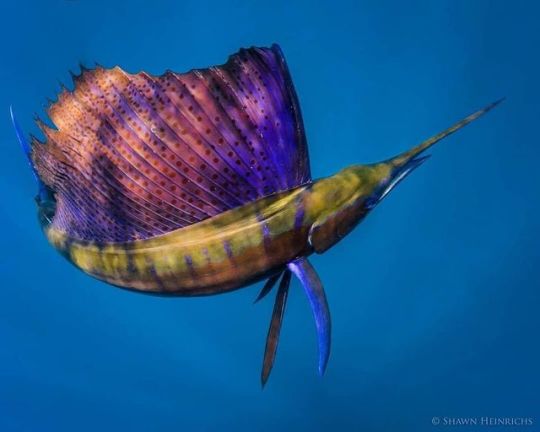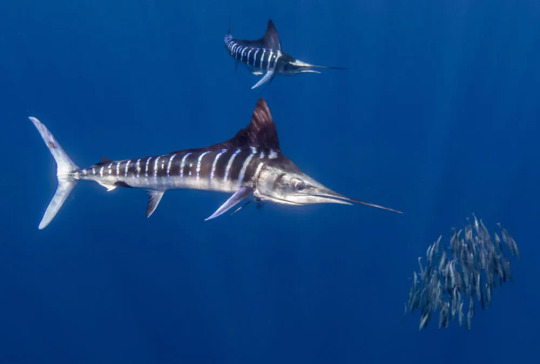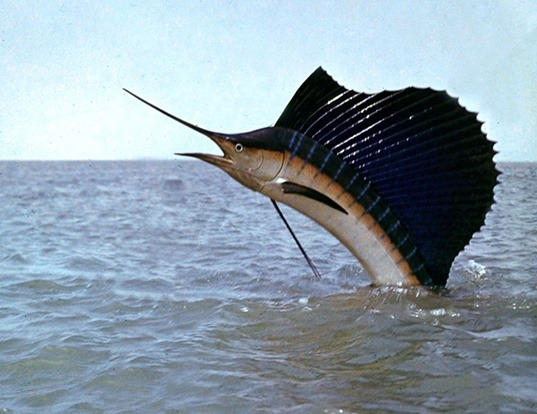#sailfish
Text

Roblox coil sound
#sonic#sonic the hedgehog#sonicau#sth#sonic alternate universe#sth au#sth fanart#fish#sailfish#sonicthehedgehog#sea monster#sea creatures
465 notes
·
View notes
Text

sailfish chimera
2K notes
·
View notes
Text
MER WARS!!!!!!
(Pacific Sailfish)

Click to see the chain: Time // Twi // Wars // Sky // Hyrule // Legend // Wild // Wind // Four
Click to see the Mers!: Time // Twi // Sky // Hyrule // Legend // Wild // Wind // Four
More details:
Body

Weight: 100kg (220lb)
Length: 2,13 m (7ft)

- The long dorsal fin(sail) adjusts to the speed, becoming narrower to the body at high speeds and opening up for maneuvers, turns, combat and intimidation.
- "unicorn horn" with serrations used to increase hydrodynamics and serve as a weapon for combat, defense and hunting


- "pectoral" fins open like butterfly wings for under water stability
~~~⛴️~~~
#gatto art#linked universe#linkeduniverse#lu#lu au#h2o au#mer au#mermaid au#mer!wars#mer!warriors#mer art#mermaid art#sailfish#sailfish mermaid
239 notes
·
View notes
Text

Indo-Pacific Sailfish (Istiophorus platypterus), family Istiophoridae, found in the Indian and Pacific Oceans
This fish has been introduced and naturalized in to the Mediterranean, as well.
photograph by Shawn Heinrichs
375 notes
·
View notes
Text
Daily fish fact #573
Sailfish!

They hunt prey via slashing their long bill at smaller fish, injuring and stunning them. They like to hunt in groups, one sailfish going at a school of fish at a time, and individual sailfish have been shown to have a preference whether or not they slash to the left or to the right!
#fish#fish facts#fishfact#fishblr#marine biology#marine life#marine animals#sea creatures#sea animals#sea life#biology#zoology#billfish#sailfish
231 notes
·
View notes
Text

Louisiana Conservationist, May-June, 1974. Illustration by Duane Raver Jr.
Internet Archive
313 notes
·
View notes
Text




i never posted bill here is bill (they/them)
#top right i fucked up and made the bill way too short AND didnt color it dark ignore that#theyre inconsistently drawn dont worry about it#ocs#splatoon oc#sailfish#theyre really boring compared to other sailfish splatoon and not splatoon ocs ive seen but theyre good this way
271 notes
·
View notes
Text
Animal of the Day!
Indo-Pacific Sailfish (Istiophorus platypterus)

(Photo in public domain)
Conservation Status- Least Concern
Habitat- Indo-Pacific Ocean; Atlantic Ocean
Size (Weight/Length)- 100 kg; 3 m
Diet- Fish; Squid; Crustaceans
Cool Facts- The Indo-Pacific sailfish is the fastest fish in the world, clocking in at a maximum speed of 110 kilometers per hour in short bursts. Living in small schools, these sailfish are constantly on the move and in the search for schooling fish. Pushing the school of prey fish into a ball allows the Indo-Pacific sailfish to dart in, one at a time, with amazing speed. Contrary to popular belief, sailfish do not spear fish using their bills. Instead, they rapidly move their head back and forth as they swim through the school, injuring prey with the side of their bill. When the next sailfish dives into the school, the injured fish are snapped up.
Rating- 13/10 (Supreme swordfighter.)
#animal of the day#animals#sailfish#fish#marine creature#thursday#august 17#indo-pacific sailfish#biology#science#conservation#the more you know
199 notes
·
View notes
Photo

The swordfish Gang. Did this one a while ago as I’ve always been inspired by the dynamic and sleek nature of these phenomenal fish.
957 notes
·
View notes
Text

You know what that means...
#FISH!#sonic#sonic the hedgehog#sonicau#sth#sonic alternate universe#sth au#sth fanart#lion fish#sailfish#sea monster#sea creatures#shadow the hedgehog#shadow
189 notes
·
View notes
Text
It occurs to me that I have yet to cover an actual bony fish for Wet Beast Wednesday, so it's billfish time. Billfish are a group of related fish in the families Xiphidae (swordfish) and Istioporidae (marlins) that are knows for their long, pointed rostra, commonly known as bills. The taxonomic placement of billfish is something of an open question. Some sources place them with barracudas in the order Istiophoriformes while newer sources group billfish and barracudas with the tuna and mackerels in a group that I'm delighted to inform you are called scrombroids.

(image: a swordfish)
All 12 living species of billfish are large, migratory predators which live in the epipelagic zone (sunlit region) of the open ocean that rarely approach shore. As they either lack teeth or have small, file-like teeth, they feed primarily on small fish they can swallow whole. Billfish typically hunt schooling fish like mackerel or herring by swimming through the school, waving their bill from side to side to strike and stun and/or injure fish so they can be easily eaten on a second pass. Despite common depictions, billfish rarely impale or slice apart prey. Some species may also use their bills for defense as bills have been found imbedded in predators such as sharks. There are reports of billfish charging boats and getting their bills stuck, which is likely accidental. Many pelagic fish are attracted to floating objects so the billfish may have charged fish around the boat or mistaken the boat for a school of fish. Swordfish have broad, flat bills while marlins have rounded bills.

(image: a swordfish skeleton)
Billfish are considered highly migratory as they are constantly moving, migrating to follow the currents and find the best feeding grounds for their prey. Some species restrict their migration to certain regions (with half of the living species living primarily or exclusively in the Indian Ocean) while others, like the swordfish, live worldwide. Because of their constant migration and wide distribution, it can be hard to find and study them in the wild. Consequently, little is known of their movements and life histories, which complicates conservation efforts. All species live primarily within the epipelagic zone, but some will occasionally descend to the mesopelagic (twilight) zone. They have specialized swim bladders that can quickly compensate for pressure changes. This allows billfish in the mesopelagic to quickly ascend where other fish would have to slowly acclimate to the pressure difference. In the open ocean, speed is often one of the most important traits for both predator and prey, as there is nowhere to hide. Billfish are masters of speed. All species are capable of rapid bursts of speed, though the sailfish holds the record for the world's fastest fish. They have been reported moving up to 111 km/h (69 mph) though more modern estimates suggest this is an exaggeration and their top speed is between 37 and 55 km/h (23 to 23 mph). Like cheetahs, billfish are sprinters, only able to move so fast in short bursts. Billfish can tuck their dorsal fins into grooves on their backs to further streamline their bodies and are slightly endothermic, keeping their body temperature a few degrees above the water temperature, both adaptations that help with their speed.

(image: two marlin and some fish that are about to have a very bad day)
The swordfish (Xiphias gladius) is the most famous billfish and has several physiological differences from its marlin cousins. Interestingly, they have both teeth and scales as juveniles, but lose them ad adults. During the day, swordfish live in deep water, hunting in the deep scattering layer (which is worthy of its own post), ascending to shallower water at night. They are known to bask with their dorsal fins out of the water and to jump out of the water, likely an attempt to dislodge lampreys and remoras. Another famous billfish is the sailfish, a species of marlin known for its extremely large dorsal fin, which extends down most of the back. Known as the sail, this fin is raised during hunting to herd prey and is kept flat against the body most of the time. Sailfish have also been seen raising their sails after hunts, probably using them to cool down after a strenuous period of activity. Sailfish were previously divided into two species, the Atlantic and Indo-Pacific species, but most sources now consider them to be the same species.

(image: a sailfish with sail raised hunting a group of small fish)
All species of billfish are popular gamefish and many are fished commercially. Anglers consider billfish to be highly coveted due to their large sizes and the fights they put up. They are one of the more dangerous gamefish as they can easily injure or kill a person with their bills while thrashing around. There are no reports of billfish attacking someone unprovoked. Many species are being overfished or are having they prey overfished and conservation efforts have been put in place for some of them.

(Image: a sword made of a swordfish bill I found at an aquarium)
#wet beast wednesday#biology#fishblr#fish#animals#ecology#zoology#marine biology#swordfish#marlin#sailfish#cw animal skeleton
163 notes
·
View notes
Text
MERMAID WARS >:D


H2o au:
Time // Twilight // Sky // Hyrule // legend // wild // wind // four
#gatto art#linked universe#lu#Lu au#h2o au#lu warriors#linked universe warriors#mermaid warriors#mer!wars#mermaid#sailfish#sailfish mermaid#I don't have favorites....u have#I'm pround of this one#46 attempts x.x#but it was worth it#I hate colors :3
86 notes
·
View notes
Photo

Atlantic Sailfish for a $5 Ko-fi supporter
#art#my art#digital#digital art#clip studio#clip studio paint#csp#kofi#ko-fi#kofi commissions#commissioned work#request#doodle#stylized#angular#fish#sailfish#atlantic sailfish#Istiophorus albicans#lazert#lazer-t
101 notes
·
View notes
Text
🐠 Daily Fish Fact: 🐠
Sailfish live in colder pelagic waters of all Earth's oceans, and hold the record for the highest speed of any marine animal. The sail is normally kept folded down when swimming and only raised when the sailfish attack their prey. Some sources indicate that sailfish are capable of changing colours as a method of confusing prey, displaying emotion, and/or communicating with other sailfish.


#sailfish#SAIL#swordfish#billfish#fast fish#speedy#i am speed#speedy fish#sail fin#shark blog#fish facts#daily fish fact#facts about fish#daily facts#fun facts#facts#ocean#ocean life#marine#marine life#respect the locals#fish#pelagic fish
45 notes
·
View notes
Text
Daily fish fact #388
Indo-Pacific sailfish!

It is believed to be the fastest fish, being able to reach speeds of 110 kph (68 mph)!
#fish#fishfact#fish facts#fishblr#marine animals#marine life#marine biology#sea life#sea creatures#sea animals#biology#zoology#marlin#sailfish#indo-pacific sailfish#indo pacific sailfish
191 notes
·
View notes
